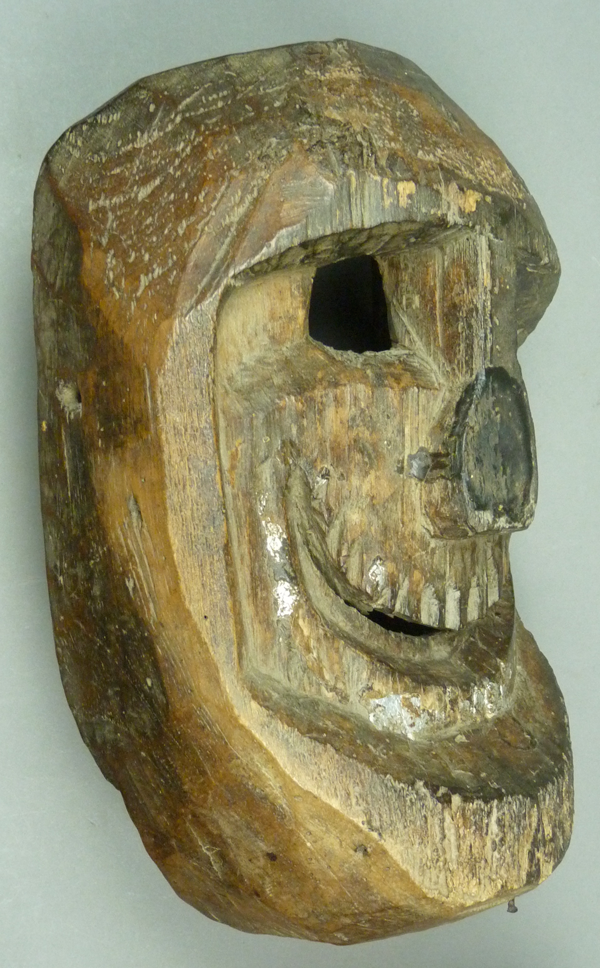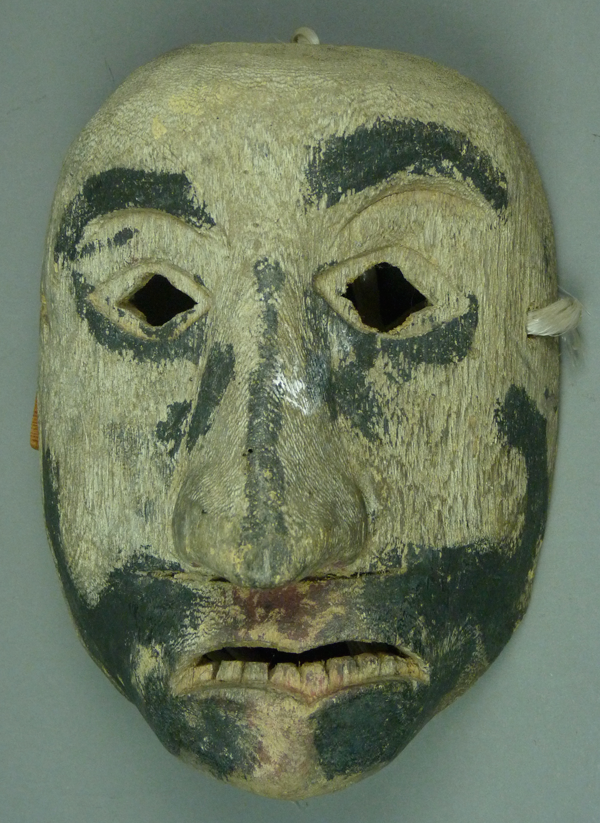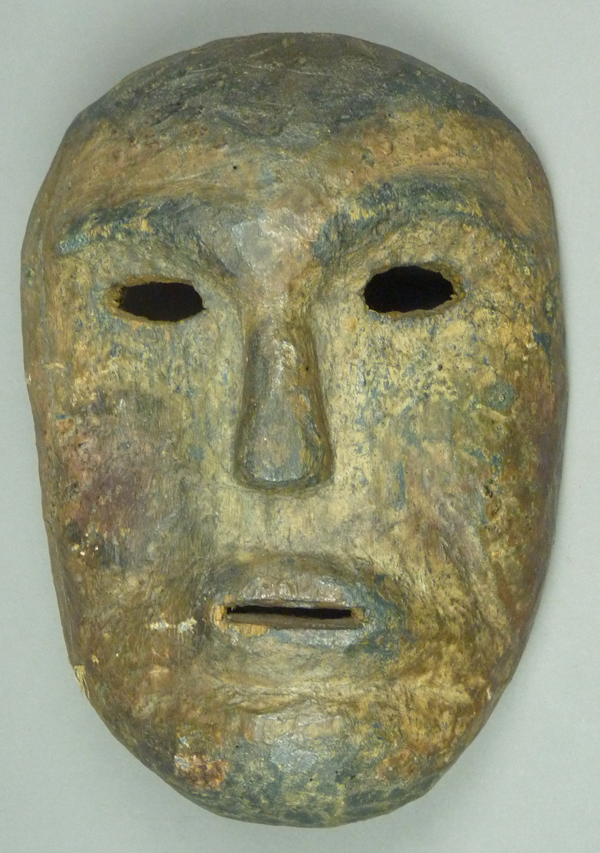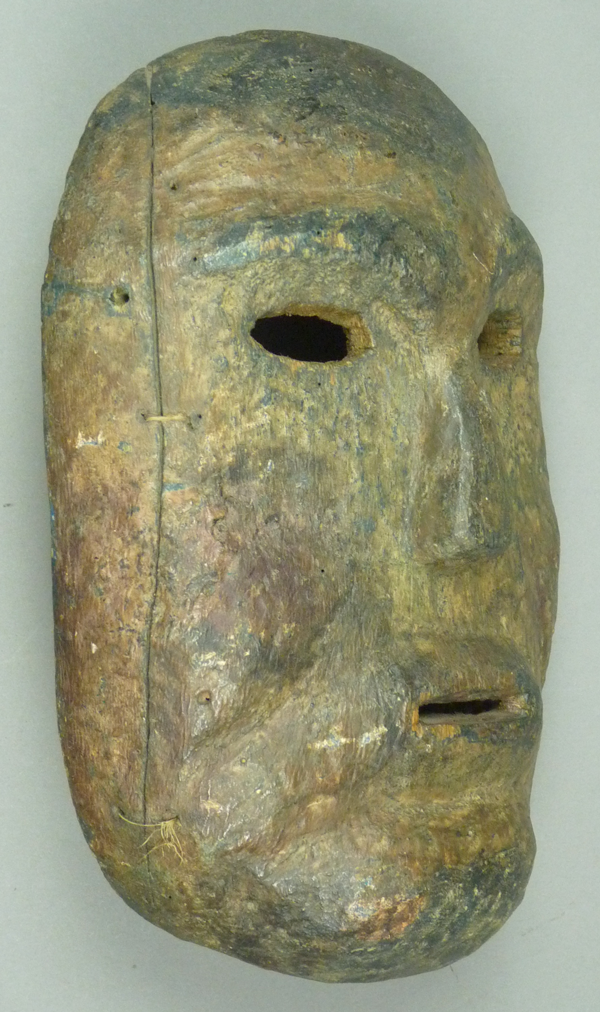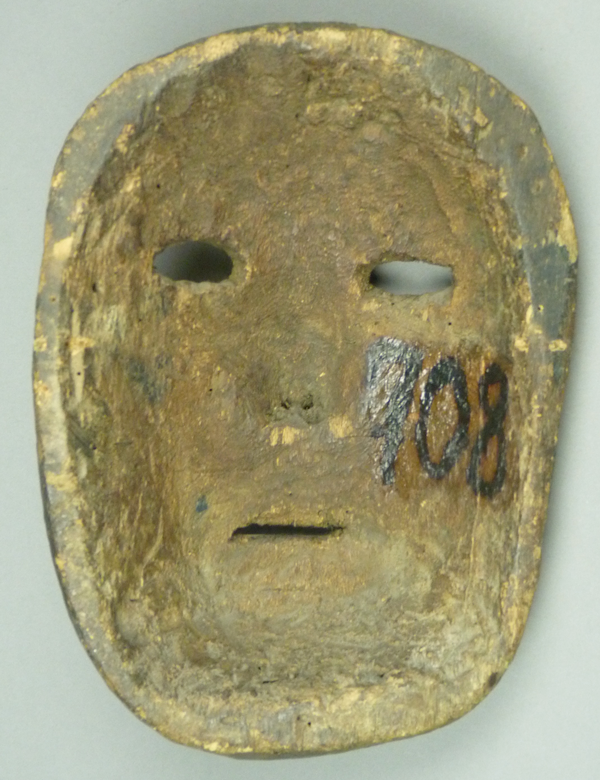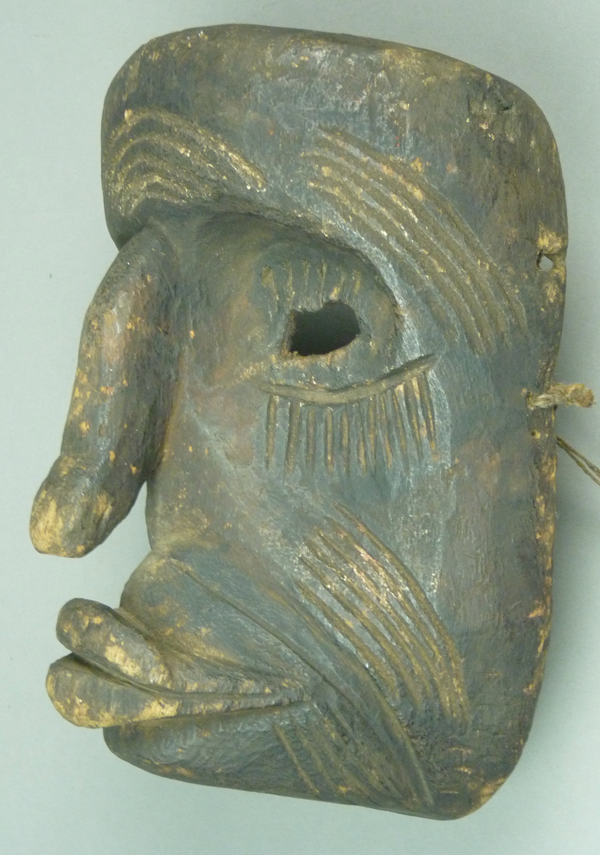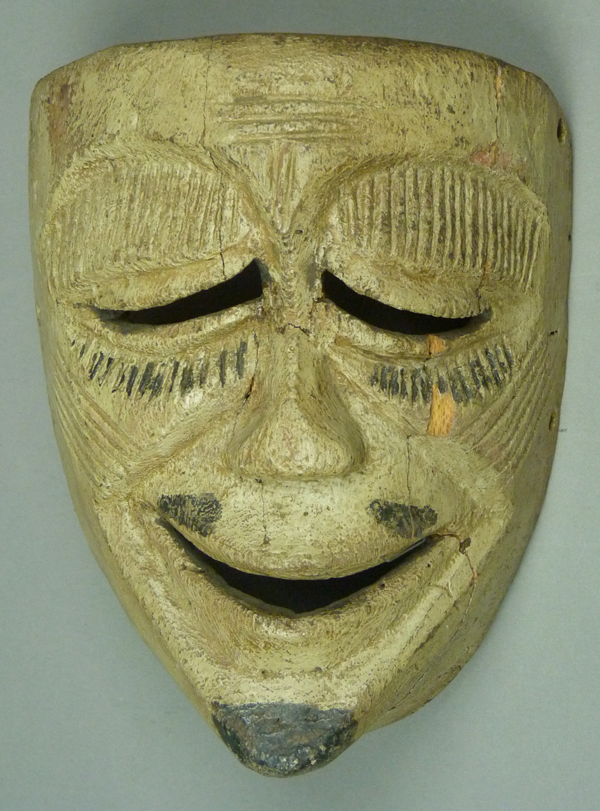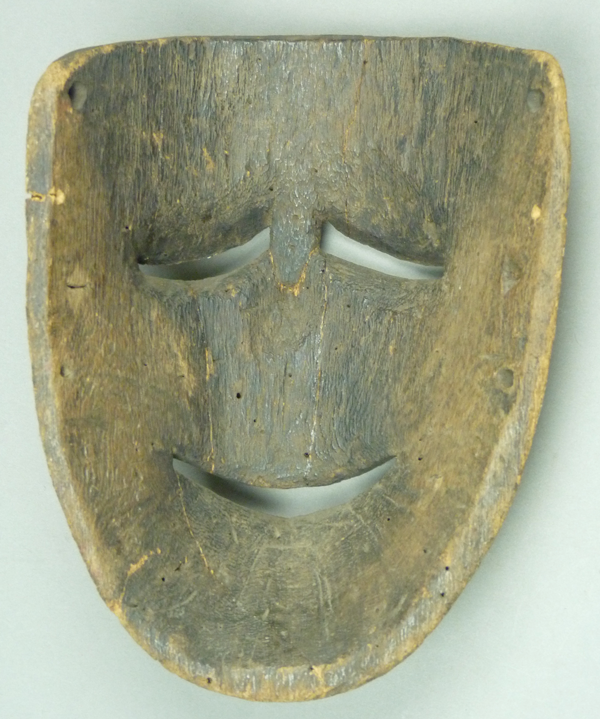This last group of human faced Xantolos features masks notable for primitive elegance.
I will begin with masks that were stained rather than painted. The first is a primitive masterpiece. It is labeled a Huehue/ Xantolo, from Piedras el Avaro, in the Municipio of Tantoyuca, Veracruz. I got this mask from Jaled Muyaes and Estela Ogazón in 1998.
This mask continues the theme of the dead wearing flabby, formless faces.
It is 9½ inches tall, 6 inches wide, and 4¼ inches deep.
This mask has the box type form that we saw in some of the Juanegro masks from this region. There is prominent staining from use.
The next mask is interesting on several counts. It resembles several of the Xantolos masks in the collection of Rafael Coronel, as illustrated in La Tierra y El Paraíso (1993, page 142). When I visited the Coronel Museum, in Zacatecas, I saw two other Xantolo masks that had simililar dramatic smiling mouths, but those two don’t appear in any book. Remarkably, there is another mask like those in the Catálogo de Máscaras del Estado de Guerrero de las Colecciones Del Museo Nacional de Antropologia. The author, María Teresa Sepúveda Herrera (1982, pages 283 and 284, plate 208) was unable to recognize this mask as one from Guerrero, although it had been attributed to that state; she could only label it as an unknown mask. It is really a Xantolo from Hidalgo. In contrast to those other masks, the present example is much more primitive in its carving.
Apparently there was an extension to the nose that was attached with pitch. There are remnants of old silver foil (from cigarette packs) that outlined the mouth. The crude carving of the face suggests decrepitude. I bought this mask from Jaled Muyaes and Estela Ogazón in 1998.
It is inches 10 tall, 6 inches wide, and 3½ inches deep.
Look at the profound staining on the back of this mask. It has had heavy use.
This next mask was originally unpainted, then later the features were crudely drawn in with black paint. I bought this mask from Sergio Roman, of Mexico City, in 1997.
The nose is well carved. The eyes and the mouth are so unusual that I think of this as an Eskimo mask from Mexico.
It is 8 inches tall, 6 inches wide, and 3¼ inches deep.
The back is dirty and worn.
In contrast to the last mask, this one has been painted and repainted, so that it has a murky blend of colors. Actually I like the effect of this. I got this mask from Jaled and Estela in 1997. I believe that it is from Hidalgo.
This is another mask that would have fit in with the post about the colors of death. A crack on the right cheek has an old repair.
This mask is 9 inches tall, 6½ inches wide, and 2½ inches deep.
The back is actually much darker than this photo indicates; it is old and worn. The darkness of the old number from the 1981 UNAM show distorted the exposure.
This next mask has unusual features. On the back is scratched- Chantolo, San Jose, Ver. I got this mask from Jaled and Estela in 1997.
The nose is primitive and the mouth is remarkably sophisticated. I find it irresistible.
It is 9 inches tall, 6 inches wide, and 4 inches deep.
The back is even darker than it looks in this photo.
The last of these masks is olive green. I got it from Jaled and Estela in 1997.
The drooping crescent shaped eyes are distinctive.
It is 7½ inches tall, 5½ inches wide, and 2¼ inches deep.
The back is old and worn.
Next week I will introduce you to some Xantolo masks with animal faces.





